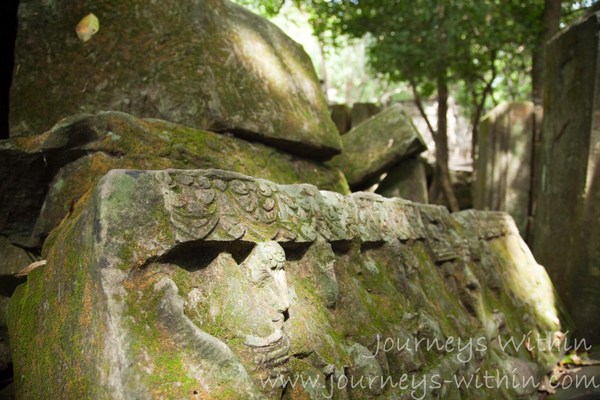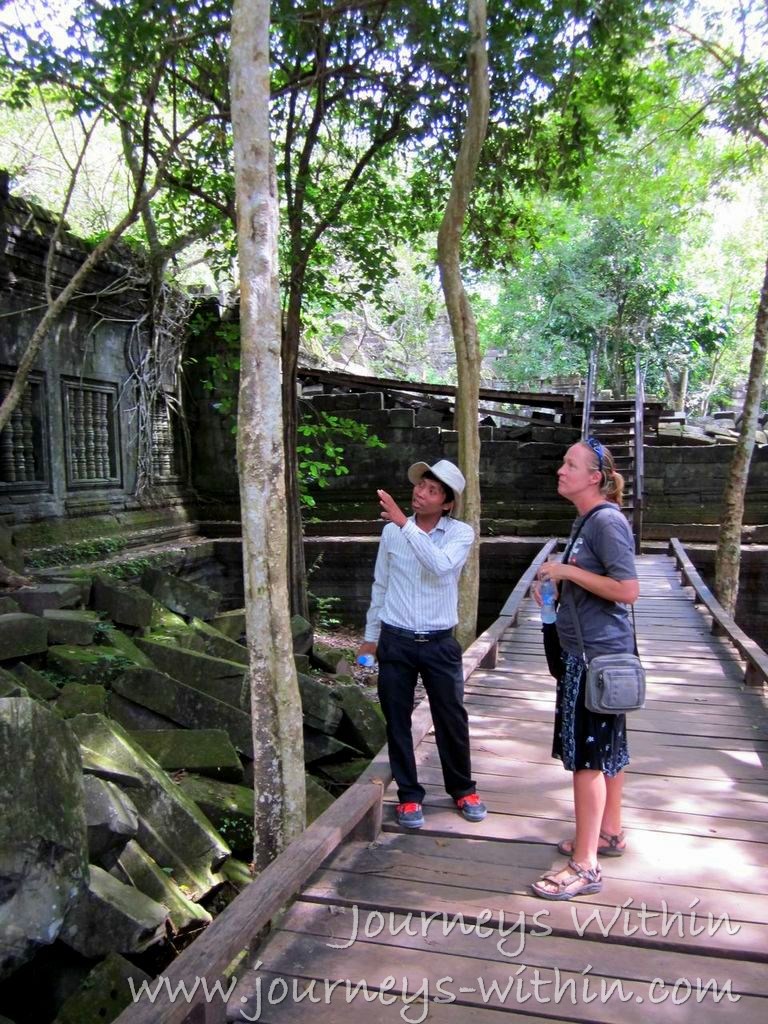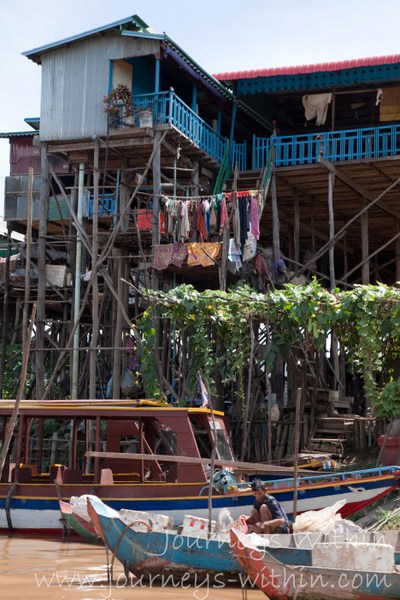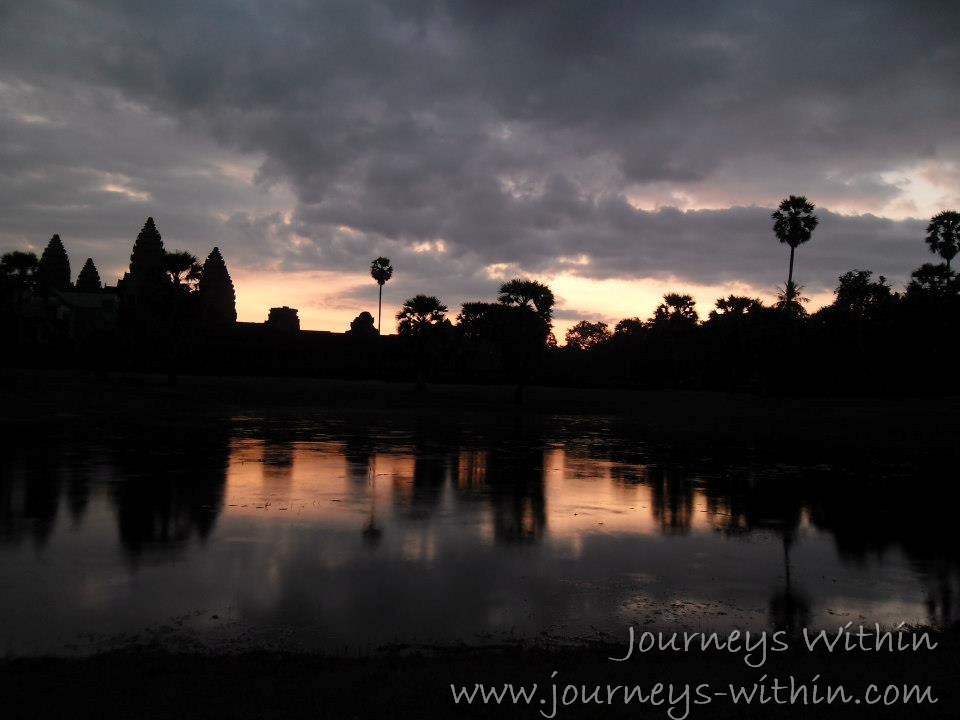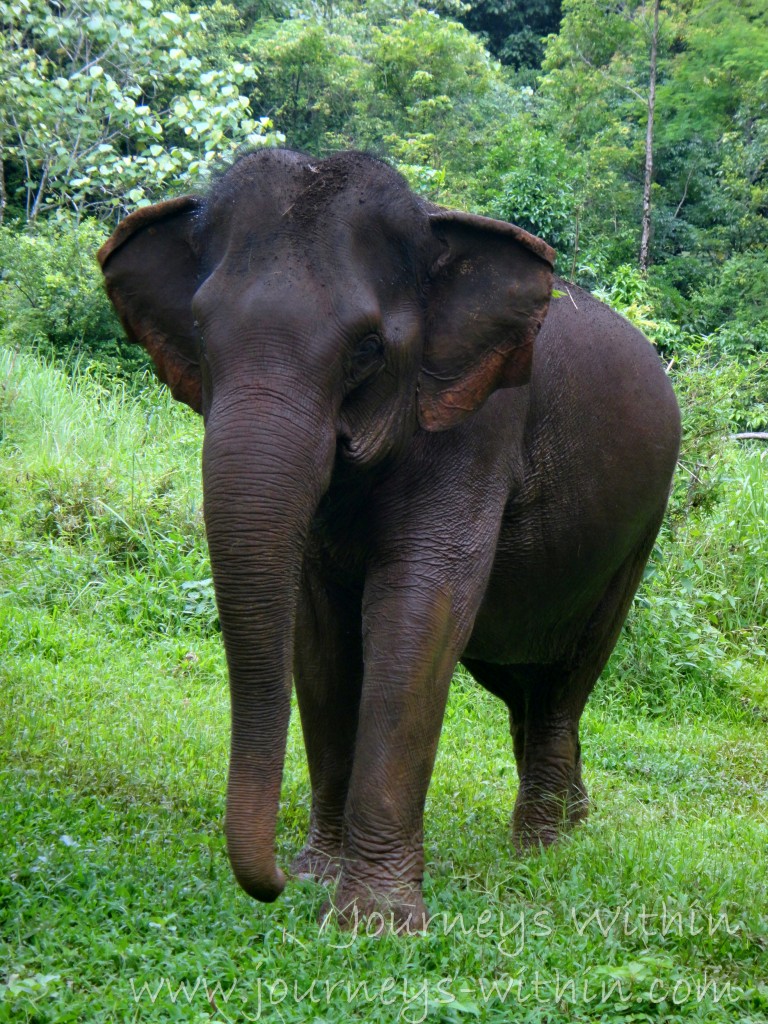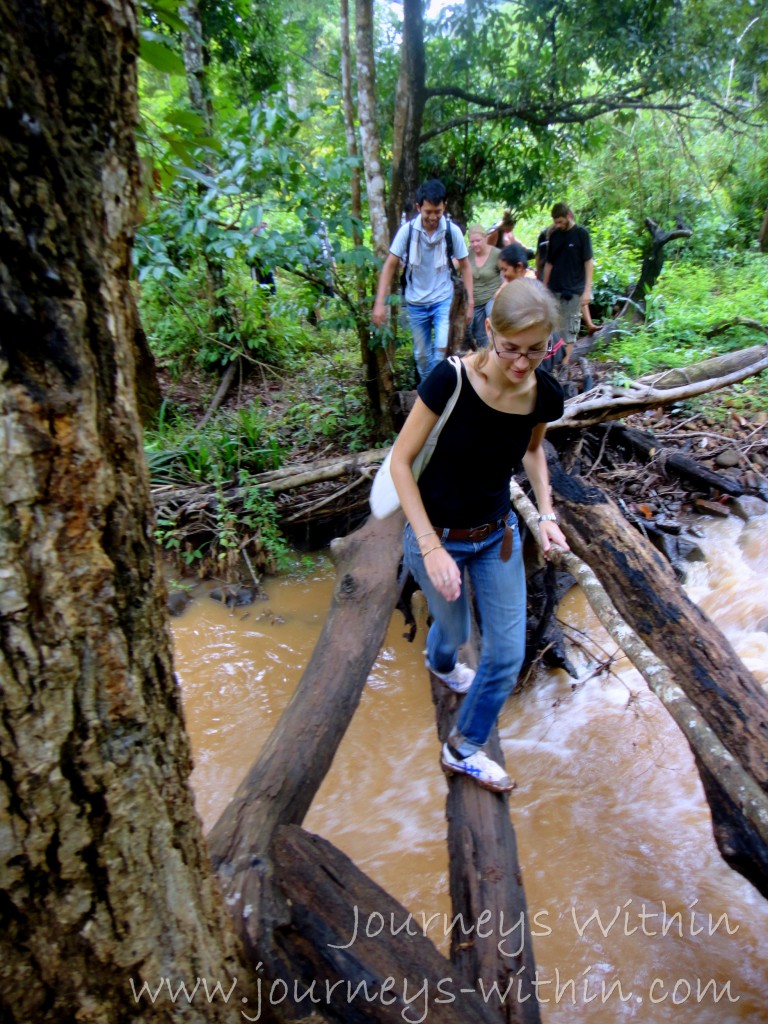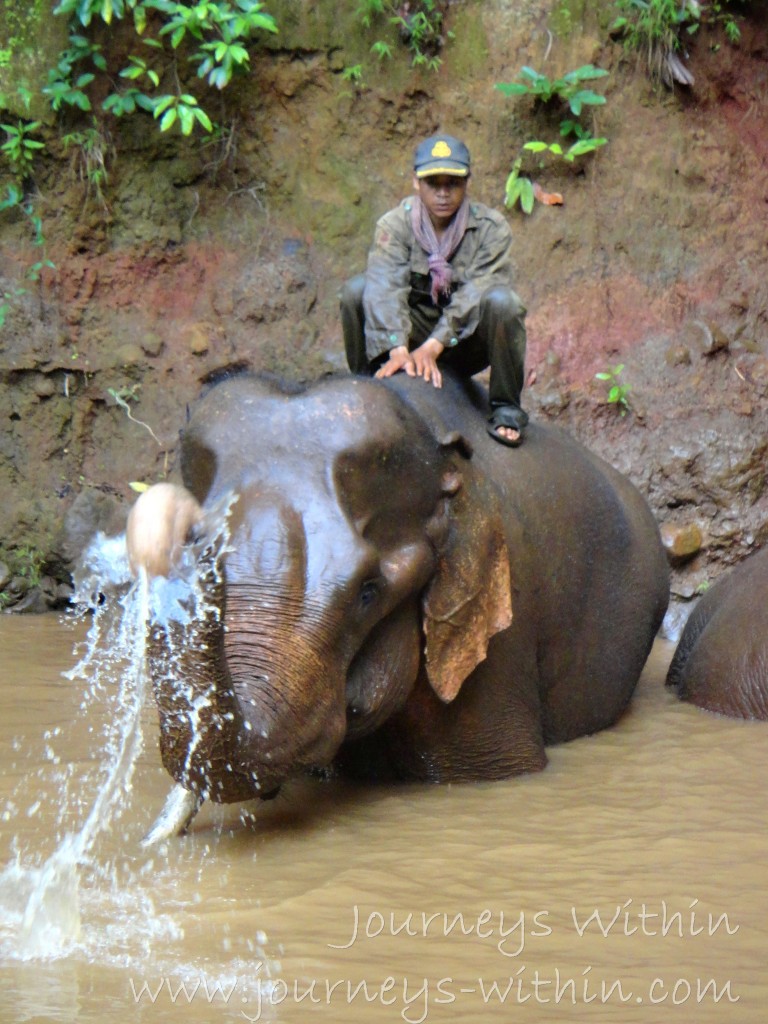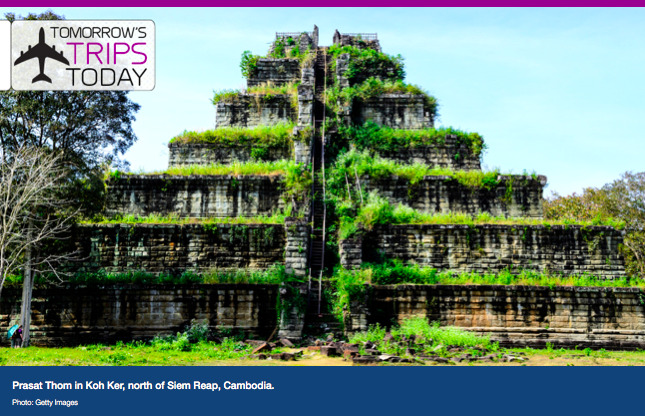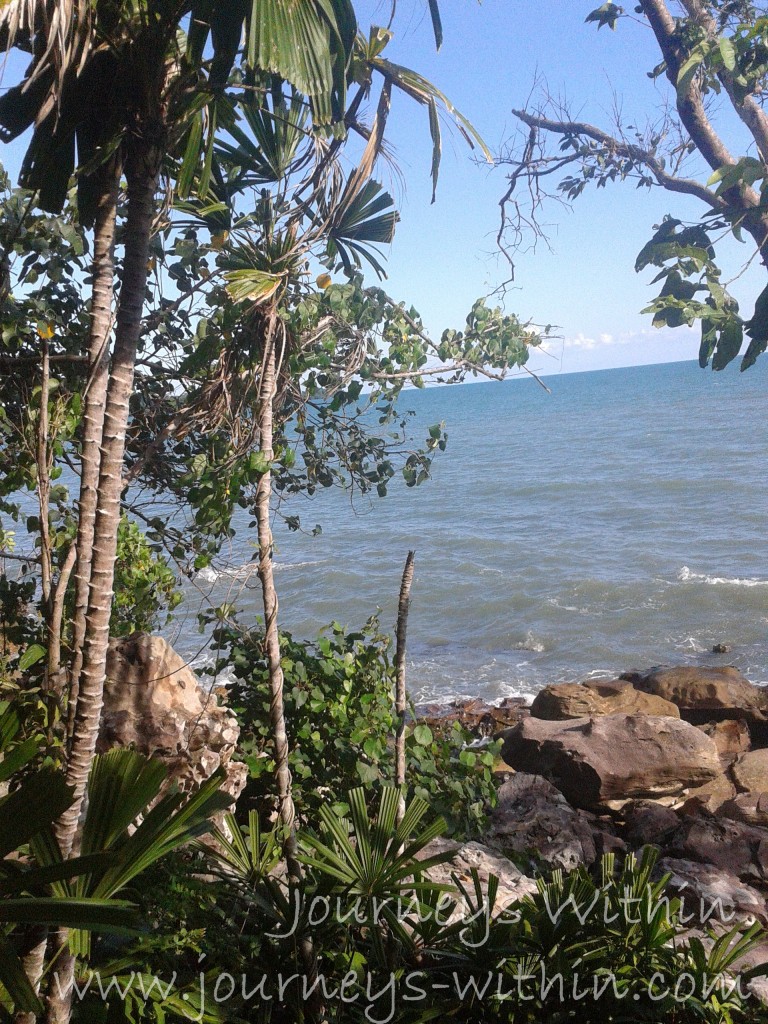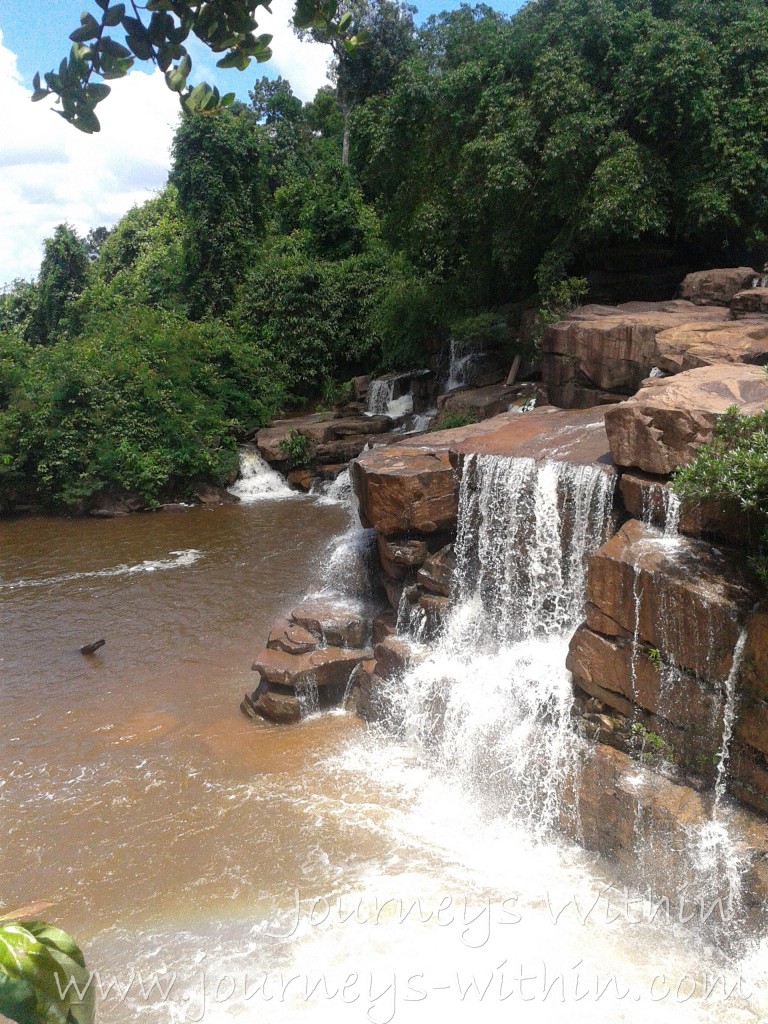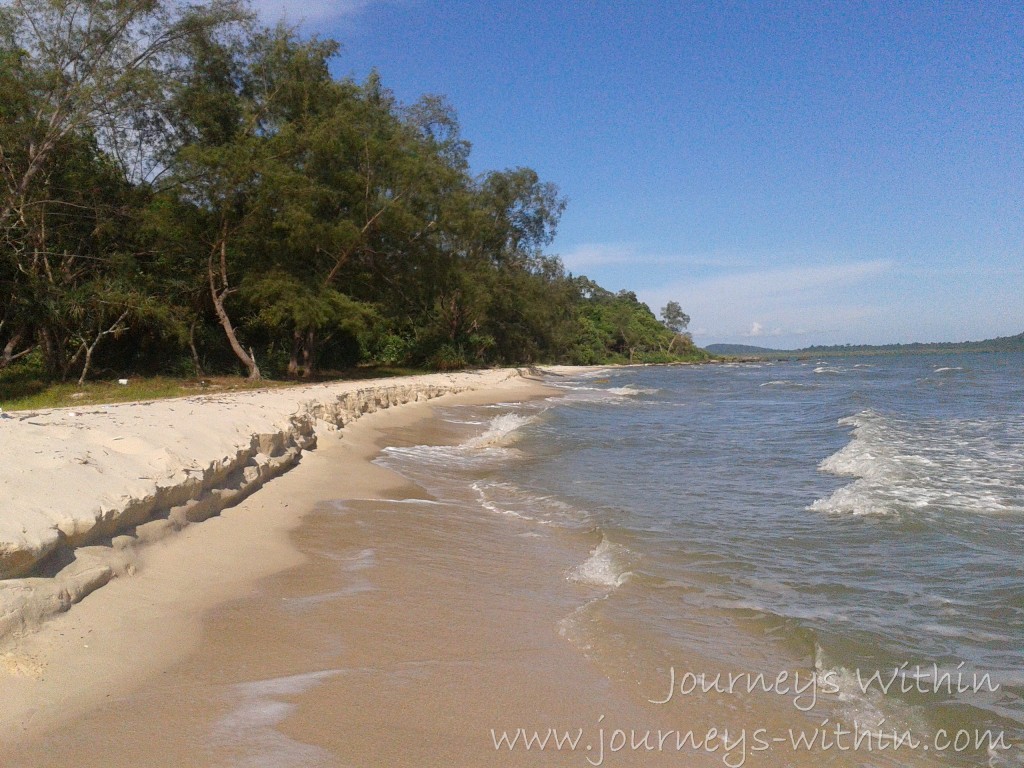One of the many great things about the temples of Angkor is the sheer variety. Bayon temple is totally different from Angkor Wat, which is different again from Ta Prohm which is completely unlike Bantey Srei. I could go on.
Having seen quite a few of these temples now it’s easy to get a little blasé about them but Beng Mealea provided a different experience altogether. The day started with my husband and I and an 8 am pick up by our guide Santhou. Our journey took us first east of Siem Reap then north — a drive of a little over an hour, past rice fields and into the jungle.
On arrival it was quickly clear that Beng Mealea was going to be more ‘Indiana Jones’ than your average temple; huge piles of carved moss-covered stones block the entrance to the site which is accessed via an elevated wooden walkway giving you a wonderful view down over the ruins.
Here, unlike at Ta Prohm, there are no ‘mind your head’ signs and the jungle is still, visually at least, in control. As we scrambled down among the rubble to ground level it came to our attention that flip-flops weren’t the brightest choice of footwear but this minor adversity was soon forgotten among the emerald stones, carvings and tree roots. Pictures were snapped while Santhou waited patiently and explained how the temple would have looked after its construction during the early 12th century (its exact age is actually unknown and is dated on its architectural similarity to Angkor Wat).
Little restoration has been done at Beng Mealea and the piles of massive stones serve to illustrate just how incredible the restoration has been at other sites, for example Bayon, which was in a very poor state before reconstruction. Imagine trying to piece together a pile of enormously heavy jigsaw pieces in 3D! Not so easy. I have renewed respect for the restorers of ancient sites.
Another fascinating thing I learnt today was that few of the temples of Angkor were actually completed. Each project was so massive that rarely did the commissioning King outlive the construction of his monument, and his heir was far more concerned with commissioning his own temple than wasting manpower on that of his predecessor. There are many lessons to be learnt there I feel.
Leaving Beng Mealea we headed back in the direction of Siem Reap, stopping for lunch at a lovely local restaurant on the way, where Santhou told us of his love for tennis and how much he was enjoying this year’s Wimbledon. Being tennis fans ourselves this provoked an animated discussion although I was sorry to hear that Santhou has never actually had the opportunity to play the game. So many of our facilities are taken for granted in the west.
Following on from lunch, we turned south off route 6 in the direction of the Tonle Sap. Bumping over roads that are only seasonally passable (and barely passable at ANY time of year) we reached Kampong Phluk, about 40 minutes later. One of many villages on stilts by the shores of the Tonle Sap, the houses, shops and schools rise 30-40 feet or so into the air during the dry season, supported by flimsy looking bamboo poles. I made a mental note to revisit during wet season – it would be curious to see how different this place looks when watery.
Boarding a small boat we cruised through the narrow village waterways and out onto the Tonle Sap where the skies are huge and the whole world seems blue! Tired from the heat we were grateful to climb back into our air-conditioned car for the short drive back to town.
One last treat remained; the sampling of a local snack. Santhou is a big fan of deep fried tarantula which he implausibly claims tastes like coconut milk (not chicken!). Being a bit of an arachnophobe I can’t say I was too keen on that idea though and was more than happy to play it safe with some local sticky rice!… Read more »



